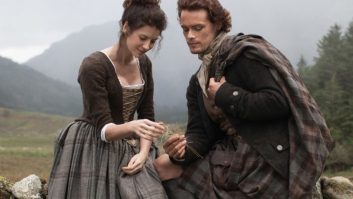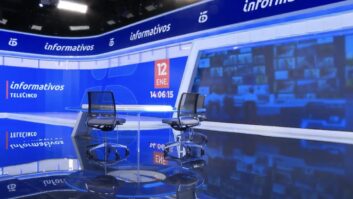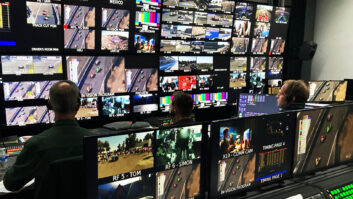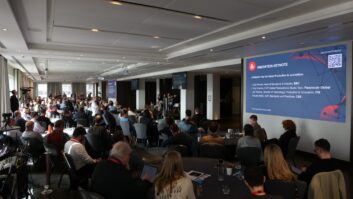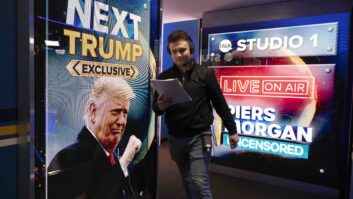Egripment Support Systems has purchased five Camera Corps Q-Ball HD systems for a major television reconstruction of Charles Darwin’s Beagle voyage.
The programme is being produced by the Netherlands-based VPRO broadcast network.
“VPRO was greatly interested by Camera Corps’ Q-Ball demonstrations at NAB and realised that the camera was ideal to provide action shots through the Beagle voyage,” commented Egripment Managing Director, Constant Tresfon. “The entire production, starting this September and going through to next June, is being shot in HD so the Q-Ball’s 1080i-native capability, combined with its compactness, infra-red night-shooting capability and very high-spec robotics, made it an ideal choice. The clipper Stad Amsterdam has been converted into a floating studio which will deliver over 1000 hours of television including 35 broadcast shows, live streams and live chat plus several radio shows. The Q-Ball heads will be mounted at various locations on the vessel and operated via single joystick on a Camera Corps control unit.”
After a demonstration of the camera and subsequent discussions with VPRO cameraman Hans Fels and Ronald de Graaf (who is responsible for all broadcast technology during the Beagle reconstruction), Constant Tresfon visited the Stad Amsterdam in Nice. Key discussion points were potential camera positions and the Q-Ball’s ability to tolerate salt-water spray during this 10-month trip. All the supports were manufactured from stainless steel and needed to be easy to mount.
“The Q-Balls were given a special hard anodised finish on the outside and inside surfaces,” detailed Camera Corps Technical Director, Jim Daniels. “Stainless steel bearings inside each Q-Ball ensure that the camera drives work efficiently in high levels of salt-water spray. Internal and external cables are fully sealed.”
“Practically everything on deck is completely watertight,” Constant Tresfon continued, “so it was very hard to find access routes for the cables; we were certainly not permitted to drill holes! With some creative thinking and support from the crew on board, this problem was solved as well. We located and measured the fixed camera positions, one of which is very high in the mast. One Q-Ball will be used in conjunction with an Egripment Genie Jib. We designed a special clamp that can be used at several locations on board. It allows the Genie Jib to be mounted quickly and firmly, even in strong weather. This way it will be possible to start a shot just above the water before swinging up and into the boat. The Genie Jib is configured to carry the Q-Ball as well as a standard ENG camera. The other Q-Balls will be at various locations on deck, within reach for the technicians to change camera positions during each day.”
“It is very gratifying that Q-Ball robotic cameras have been chosen for such a high-profile project,” Camera Corps Managing Director, Laurie Frost observed. “We hear and read a lot of comments about technical evolution as well as the natural evolution which Darwin studied and described. Q-Ball represents a major advance in the design and construction of robotic camera heads. We will be watching the Beagle series with great interest in the coming months.”
